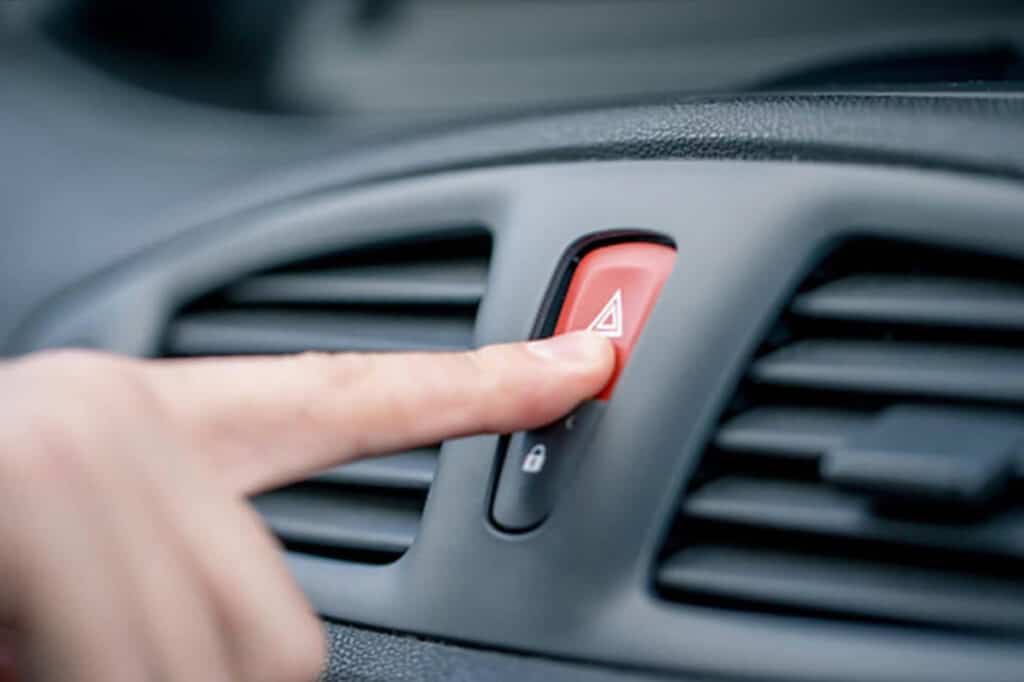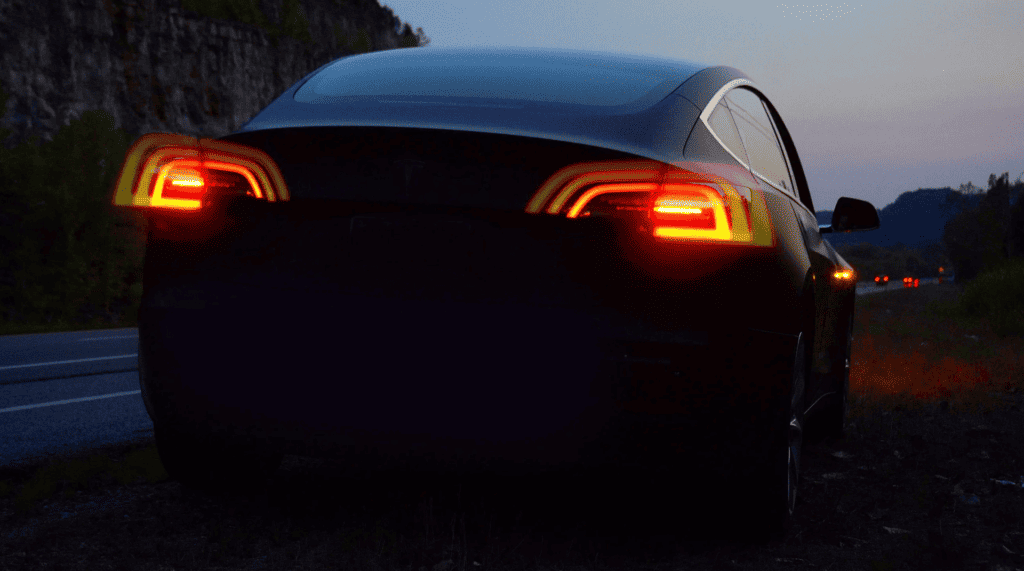Navigating the flashing maze of your car’s dashboard can be an enigma. Hazard lights, those blinking signals you rarely think about until you need them, play an essential role in vehicle safety. But what do they mean, and how should you use them? Buckle up, and let’s embark on a journey to demystify these critical beacons of automotive communication.
A Blinking Mystery: What Do Hazard Lights with Exclamation Marks Mean?
Understanding the blinking hazard light with an exclamation mark requires a bit of automotive translation. Much like an urgent memo from your boss, this symbol is your car’s way of signaling that something requires your immediate attention. It could be as trivial as forgetting to release the handbrake or as critical as a malfunction in the brake system. Tuning into this signal is like being in sync with your car’s needs, helping you to address issues promptly and maintain the vehicle in optimal condition.
The hazard lights with an exclamation mark are not merely a fancy embellishment on your dashboard; they’re an integral part of your vehicle’s communication system. It’s the equivalent of a red flag in a football game, signaling a serious concern that can’t be ignored. Recognizing and responding to this symbol is a crucial part of responsible vehicle ownership. Like adhering to a medical professional’s advice, heeding this warning can prevent small problems from becoming big ones, keeping you safe and your vehicle running smoothly.

Triangle of Warning: Understanding the Hazard Light Symbol
The triangle symbol in your car isn’t just an aesthetic choice; it’s a language that speaks to every driver on the road. Much like a handshake symbolizes an agreement, the triangle represents caution and awareness. It’s a globally recognized sign that helps maintain order and safety on the roads, fostering a sense of shared understanding and responsibility among drivers.
When you see that triangle symbol, it’s like seeing a stop sign at an intersection; it’s a universal call to attention that transcends language barriers. Whether you’re driving through your hometown or navigating foreign roads, the triangle hazard light is your vehicle’s way of saying, “Be careful; something’s up!” Recognizing this symbol and knowing when to use it is akin to learning a critical phrase in a new language – it helps bridge communication gaps and fosters safety, no matter where the road takes you.
Energy Play: Do Hazard Lights Drain the Car Battery, and How to Prevent It?
Using hazard lights is similar to running a household appliance; it consumes energy, and leaving it on unnecessarily can lead to unwanted consequences. While they are designed to be used during emergencies without draining the battery immediately, prolonged use can gradually deplete the battery’s charge. Just as you would turn off the lights when leaving a room to save energy, being mindful of turning off hazard lights can preserve your car’s battery life.
Think of your car battery as a reservoir of energy, and the hazard lights as a small stream drawing from it. While the flow might be minimal, if left unchecked, it can lead to an empty reservoir. Just like managing a budget, being mindful of how and when you use hazard lights is an essential aspect of vehicle maintenance. By following the car’s guidelines or keeping the engine running when appropriate, you ensure that the hazard lights fulfill their purpose without leaving you stranded, just as wise financial planning allows you to enjoy life without financial stress.
An Unexpected Flash: What Causes Hazard Lights to Come On?
• Misfired Alarm Syndrome: Just like a false alarm, a malfunctioning switch or wiring issue may cause hazard lights to flash unexpectedly.
• Sensor Sensitivity: Modern vehicles often include sensors that detect abnormal conditions. A sensitive or faulty sensor might interpret regular driving as a hazard.
• Electrical Issues: A short circuit or other electrical problem within the car’s system might trigger the lights, similar to a tripwire set off by the slightest touch.
• External Factors: An impact or jarring movement might engage the system. It’s as if your car is an oversensitive guard dog, barking at the wind.
• Professional Assessment Needed: Pinpointing the exact cause may require a mechanic’s expertise, akin to a detective uncovering the mystery behind the flashing lights.
When to Sound the Alarm: When and How to Use Your Hazard Warning Lights
• Emergency Stopping: Use hazard lights when you’re stopped on the road due to a sudden breakdown, flat tire, or other emergencies. Think of it as your car’s way of waving a white flag, signaling distress.
• Temporary Obstruction: If your vehicle becomes a temporary obstruction, activating the hazard lights is like turning on a flashing neon sign saying, “Caution, I’m here!”
• Weather Warnings: In some extreme weather conditions, using hazard lights might be appropriate to increase visibility, akin to putting on a bright jacket in a fog.
• Local Laws and Regulations: Just like knowing the dress code for an event, it’s wise to understand the rules of the road in your area regarding hazard light usage.
• Accident Alert: After an accident, hazard lights can serve as a beacon, alerting other drivers and emergency responders, much like a flare signaling for help.
A Guided Look Inside: The Hazard Warning Light on Your Dashboard Explained
What is that mysterious flashing icon on your dashboard? It’s like your car’s way of winking at you, alerting you that the hazard lights are on. Either activated by you in an emergency or due to a potential system fault, this little light serves as a sentinel. It’s not just a trivial decoration but a vital part of the vehicle’s communication system. Imagine it as a translator, converting your car’s internal signals into something you can understand at a glance.
Just like the lighthouse guiding ships in the night, this hazard warning light on your dashboard plays a crucial role in your journey. It keeps you informed, providing immediate feedback about your car’s state. Whether you’ve turned on the hazard lights intentionally or they’ve come on unexpectedly, this guardian of your dashboard is a constant companion. Appreciating its function means respecting its importance in the complex ecosystem of automotive safety.

Fixing the Flash: Potential Repairs Related to Warning Lights and Cost Breakdown
From a simple switch malfunction to a labyrinth of complex electrical issues, various factors can influence this phenomenon. Understanding the potential repairs is akin to having a compass in an unfamiliar city. It’s not just about recognizing the problem but knowing how to navigate the solution, ensuring that you’re prepared rather than perplexed.
When it comes to the cost breakdown of fixing the flash of hazard lights, transparency is key. It’s like opening the hood of your car and seeing the intricate mechanics inside. Some fixes might be as straightforward as changing a fuse, while others might require a deep dive into the electrical system. Having a clear understanding of the potential costs means having control over the repair process. Like a well-plotted itinerary, it helps you anticipate the journey, ensuring that the surprises are pleasant rather than shocking.
Conclusion: Lights of Caution: Your Roadmap to Understanding and Managing Hazard Lights
And there we have it, a comprehensive guide to understanding and managing your car’s hazard lights. Armed with this knowledge, you’re not only prepared for emergencies but can also handle the unexpected with confidence. Need a professional hand with those flashing signals? Uchaincs, a premier mobile mechanic company in Canada, is just a call away. Book an appointment today and make sure your vehicle’s warning lights are in perfect working order.
